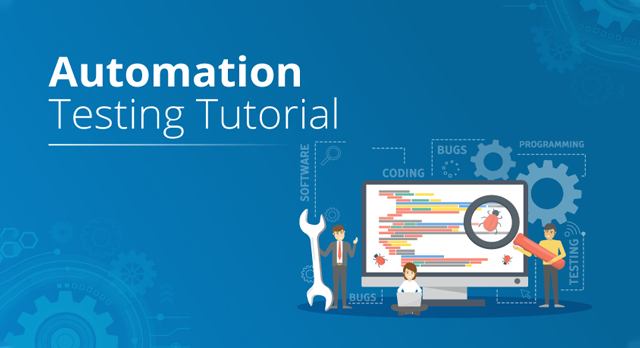From Handbook to Automated Screening: A Comprehensive Overview to Transitioning Smoothly and Effectively
In the realm of software screening, the change from guidebook to automated processes has actually ended up being a progressively crucial shift for organizations seeking to boost effectiveness and precision in their testing techniques. As technology proceeds to development, the need for efficient and smooth automated testing methods has actually never ever been much more pressing. The trip from manual to automated screening is not without its obstacles, but when come close to purposefully and with a clear plan in mind, the benefits can be substantial - automation testing. In this detailed overview, we will explore essential actions and considerations necessary for a successful shift, from the first selection of devices to the combination of automation right into existing process. Stay tuned to discover the understandings that will assist lead the way for a smoother and extra reliable testing procedure.
Advantages of Automated Evaluating
Automated screening uses numerous advantages, improving efficiency and precision in software application advancement procedures. Automated examinations can be run at the same time on numerous devices and operating systems, substantially speeding up the screening phase compared to hands-on testing.
Additionally, automated testing ensures a higher level of accuracy in detecting issues. Because automated examinations comply with predefined scripts, human mistake is lessened, causing more trusted test results. Uniformity in screening is additionally boosted, as automated tests implement the very same steps specifically each time they are run. This consistency is crucial in guaranteeing that all performances of the software program are extensively checked, decreasing the likelihood of undiscovered pests sliding via to manufacturing.
Selecting the Right Devices

Firstly, examine your objectives and needs. Recognize the extent of your job, the innovations entailed, and the ability of your group. This evaluation will certainly assist you identify the attributes and abilities you need in your screening tools.
Second of all, take into consideration the compatibility of the devices with your existing procedures and systems. Smooth assimilation with your present software advancement lifecycle is important to ensure a smooth change to automation.
In addition, review the scalability and flexibility of the tools. As your screening needs develop, the tools should have the ability to adjust and accommodate adjustments efficiently.
Finally, factor in the support and community around the tools. When carrying out automated screening, robust assistance and an energetic user area can offer beneficial sources and assistance. By carefully thinking about these aspects, you can choose the right devices that line up with your needs and set the stage for a successful shift to automated testing.
Creating Efficient Test Scripts

When crafting examination manuscripts, Homepage it is necessary to think about the specific needs of the software application being tested and ensure that the manuscripts attend to all important functionalities. Descriptive and clear naming conventions for test scripts and examination situations can improve readability and maintainability. Additionally, incorporating mistake handling mechanisms within the examination scripts can assist in recognizing and addressing problems without delay.
Moreover, organizing examination scripts into modular elements can enhance reusability and scalability, minimizing redundancy and boosting effectiveness in test script maintenance. Routine testimonials and updates to test scripts are crucial to equal progressing software program requirements and functionalities. By following these concepts, testers can develop robust and reliable test scripts that contribute significantly to the success of automated screening procedures.
Integrating Automation Into Workflows
By perfectly incorporating automated testing devices like Selenium or Appium right into the software program growth lifecycle, teams can accomplish faster responses on code modifications, leading to quicker bug discovery and resolution. This assimilation permits for continuous screening throughout the development procedure, making certain that any type of issues are identified early on, resulting in higher software program top quality. Correct assimilation of automation tools requires collaboration between growth, screening, and operations teams to develop a unified process that enhances effectiveness and efficiency in delivering premium software program items.
Making Sure a Smooth Change
Effectively transitioning to automated testing entails precise planning and careful implementation to decrease disruptions and take full advantage of see efficiency in the software program growth procedure - automation testing. To ensure a smooth change, it is necessary to start by performing a complete evaluation of the present testing procedures and recognizing locations where automation can bring the most significant advantages. Engaging with all stakeholders at an early stage in the procedure, consisting of developers, testers, and job supervisors, is important for gathering support and buy-in for the automation effort
Communication is key during this shift stage. Clear interaction of the goals, benefits, and expectations of automated screening aids to handle any resistance or problems that might develop. Furthermore, offering appropriate training and resources for employee to upskill in automation tools and strategies is essential for making certain a successful change.

Verdict
Finally, transitioning from handbook to automated screening provides many benefits, including boosted effectiveness and integrity. By selecting the appropriate devices, creating efficient examination manuscripts, and integrating automation seamlessly right into workflows, companies can guarantee a smooth and effective transition. It is necessary to accept automation as a beneficial property in software screening processes to boost overall high quality and efficiency.
In the world of software application testing, the change from manual to automated procedures has come to be an increasingly crucial change for companies looking for to boost effectiveness and precision in their screening techniques. Automated tests can be run at the same time on numerous gadgets and operating systems, significantly speeding up the testing stage compared to hand-operated testing. Consistency in screening is additionally improved, as automated tests execute the exact same steps precisely each time they are run.To make certain the successful application of selected screening devices, the development of reliable examination manuscripts plays a vital role in validating the click site capability and efficiency of automated procedures - automation testing. By complying with these concepts, testers can produce efficient and robust examination manuscripts that contribute significantly to the success of automated screening processes